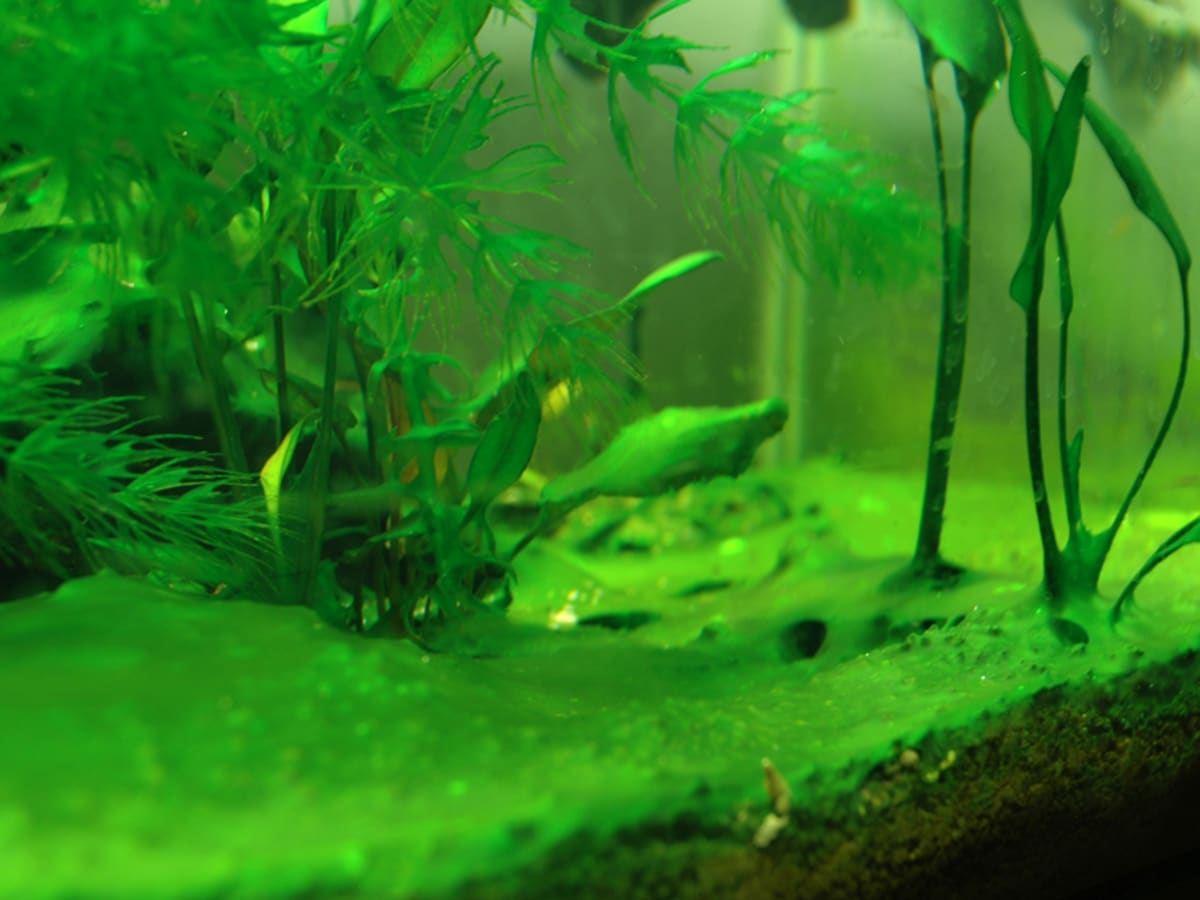Understanding Algae Blooms
Algae blooms in fish tanks are a common problem that many aquarists face. These blooms can cloud the water, create unpleasant odors, and pose risks to the health of fish and plants. Algae are simple plants that thrive in aquatic environments, using light, carbon dioxide, and nutrients to grow rapidly. When conditions are ideal, particularly when there is an abundance of light and nutrients like nitrates and phosphates, algae can multiply quickly, leading to blooms that can be difficult to control. Understanding the nature of algae is the first step in preventing and managing their proliferation. Different types of algae, such as green algae, blue-green algae (cyanobacteria), and brown algae (diatoms), have varying requirements and impacts on the tank environment. Each type presents unique challenges, making it essential to identify the specific kind of algae present in your tank to implement effective management strategies.

Causes of Algae Blooms
Several factors contribute to the occurrence of algae blooms in fish tanks. Excessive light is one of the primary causes, as algae utilize photosynthesis to grow. Prolonged exposure to intense lighting, especially direct sunlight, can accelerate algae growth. Nutrient imbalances also play a crucial role, with high levels of nitrates and phosphates providing the essential ingredients for algae proliferation. These nutrients often come from fish waste, uneaten food, and decaying plant matter. Additionally, poor water circulation and filtration can exacerbate the problem, as stagnant water allows nutrients to accumulate and algae to establish colonies more easily. Overcrowding the tank with too many fish can also lead to an increase in nutrient levels, further promoting algae growth. Understanding these causes is vital for developing a comprehensive approach to prevent and manage algae blooms effectively.
Preventative Measures
Preventing algae blooms requires a proactive approach to managing the fish tank environment. Regulating light exposure is crucial; limiting the duration of tank lights to 8-10 hours per day and avoiding direct sunlight can significantly reduce the risk of algae growth. Implementing a schedule for regular water changes is another effective preventative measure. Changing 10-20% of the tank water weekly helps remove excess nutrients that could otherwise fuel algae blooms. Ensuring proper filtration and water circulation is equally important. High-quality filters can remove debris and excess nutrients from the water, while aerators and powerheads enhance water movement, making it harder for algae to settle and thrive. Additionally, maintaining a balanced fish population relative to tank size helps control nutrient levels, as fewer fish produce less waste. Incorporating live plants into the tank can also compete with algae for nutrients, further reducing the likelihood of blooms.

The Role of Live Plants
Live plants play a significant role in preventing algae blooms by competing with algae for essential nutrients. Plants absorb nitrates and phosphates from the water, which are the same nutrients that algae require to grow. By introducing a variety of fast-growing plants, such as hornwort, water wisteria, and Amazon swords, you can effectively reduce the availability of these nutrients, thereby inhibiting algae growth. Moreover, live plants provide additional benefits to the tank ecosystem, including oxygenation of the water, natural filtration, and creating a more aesthetically pleasing environment. They also offer hiding places and breeding grounds for fish, contributing to their overall well-being. To maximize the benefits of live plants, ensure they receive adequate lighting and nutrients, but monitor these conditions carefully to avoid inadvertently promoting algae growth.
Maintaining Water Quality
Maintaining optimal water quality is critical in the fight against algae blooms. Regular testing of water parameters, such as pH, ammonia, nitrite, nitrate, and phosphate levels, allows for early detection of imbalances that could lead to algae problems. Investing in a reliable water testing kit and establishing a routine testing schedule can help you stay on top of these parameters. If high nutrient levels are detected, consider using chemical filtration media, such as activated carbon or phosphate removers, to help reduce concentrations in the water. Additionally, ensuring the biological filter within your tank is functioning correctly will aid in the breakdown of organic waste, preventing the buildup of nutrients that algae need to thrive. Addressing issues promptly, such as removing decaying plant matter and leftover food, is also essential in maintaining high water quality and preventing nutrient spikes.

Effective Feeding Practices
Overfeeding is a common mistake that can contribute to algae blooms in fish tanks. Uneaten food settles to the bottom of the tank, decomposing and releasing nutrients that algae can utilize. To prevent this, it’s important to adopt effective feeding practices. Feed your fish only as much as they can consume within a few minutes, and remove any uneaten food promptly. It’s also beneficial to feed your fish small amounts multiple times a day instead of a large quantity once a day. This approach ensures that food is consumed quickly, reducing the amount of waste produced. Additionally, consider using high-quality fish food, which tends to produce less waste compared to lower-quality options. By closely monitoring feeding habits and adjusting as necessary, you can significantly reduce the nutrient load in your tank, thereby minimizing the risk of algae blooms.

Introducing Algae Eaters
Incorporating algae-eating species into your tank can be an effective biological control method for managing algae growth. Fish such as Siamese algae eaters, otocinclus catfish, and certain species of plecostomus are known for their appetite for different types of algae. Additionally, invertebrates like nerite snails, Amano shrimp, and cherry shrimp can also help keep algae in check. These organisms graze on algae-covered surfaces, helping to reduce the overall algae population in the tank. However, it’s important to research and select species that are compatible with your existing fish and tank conditions. Ensure that the tank has adequate space and resources to support these algae eaters, and remember that they may require supplemental feeding if algae levels become too low. By introducing algae-eating species thoughtfully, you can create a balanced ecosystem where algae growth is naturally controlled.
Implementing UV Sterilizers
UV sterilizers are another effective tool for managing algae blooms in fish tanks. These devices use ultraviolet light to kill free-floating algae, bacteria, and other microorganisms in the water. As the water passes through the UV sterilizer, the UV light disrupts the DNA of these organisms, rendering them unable to reproduce. This process can significantly reduce the presence of green water algae, which is commonly responsible for cloudy tank water. Installing a UV sterilizer can provide ongoing control of algae blooms without the need for chemical treatments. However, it’s important to choose the correct size and flow rate for your specific tank to ensure optimal performance. Regular maintenance of the UV sterilizer, such as cleaning the quartz sleeve and replacing the UV bulb as needed, is also essential to maintain its effectiveness. With proper implementation, UV sterilizers can be a valuable addition to your algae management strategy.

Conclusion: A Balanced Approach
Preventing and managing algae blooms in fish tanks requires a balanced and multifaceted approach. By understanding the causes of algae growth and implementing a combination of preventative measures, you can create a healthy and stable tank environment. Regular maintenance, proper feeding practices, and effective light management are essential components of algae control. Incorporating live plants and algae-eating species adds biological competition that helps keep algae levels in check. While chemical treatments and UV sterilizers can be useful tools, they should be used judiciously and in conjunction with other methods. Ultimately, a proactive and holistic approach that addresses the root causes of algae blooms will yield the best results. By staying vigilant and committed to maintaining optimal tank conditions, you can enjoy a clean, clear, and vibrant aquarium that supports the well-being of your fish and plants.










